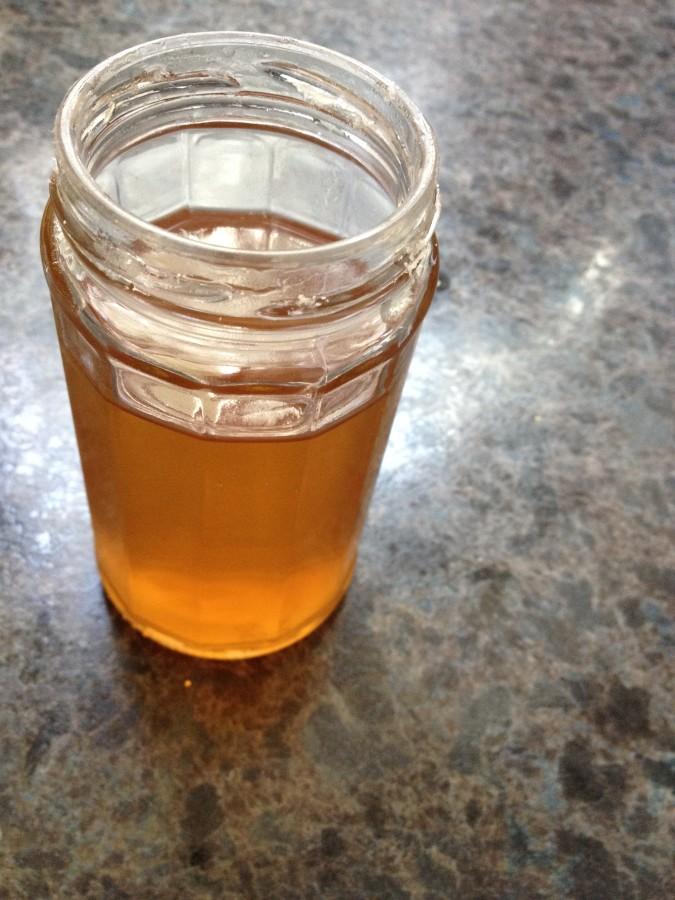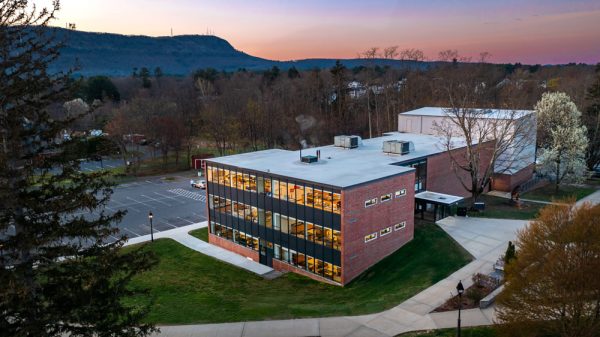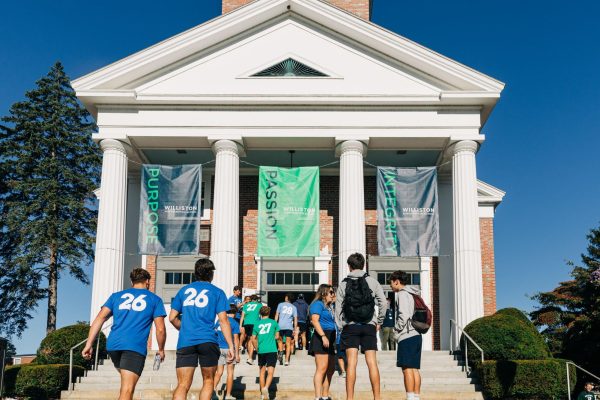Mr. Gunn Makes Maple Syrup
From late February 2014 to late March 2014, sap ran steadily from the trees on campus. Williston history teacher Mr. Gunn has something to show for it.
Mr. Gunn and his family have been making their own maple syrup on campus for the past ten years. There are three essential steps to creating this syrup that Gunn must go through, including tapping the trees, harvesting the sap, and boiling it down.
To tap the trees you must drill holes and attach buckets or some other mechanism to collect the sap. When Mr. Gunn first began tapping the trees, he focused on four situated on Brewster Avenue. Since then their operation has expanded to include six more. “The weather was so bad that I was afraid we weren’t going to get much sap. So it was an attempt to increase the amount of sap,” says Gunn. The ideal temperatures would reach 25 degrees F at night and 45 degree F days with sun, but with the unpredictable weather throughout March, it made collecting a sizeable amount of sap difficult.
“Mother Nature tells you when you can start and Mother Nature tells you when you can stop,” says Gunn, “and in this age where we have all these tools that let us do things in a sort of virtual reality… it’s a useful thing to remember that some things in life are outside our control.” Gunn adds that, “the best thing we can do is take advantage of when things are good and adjust when they are not.”
The second step to creating the syrup is harvesting the sap from the buckets on the trees. The sap must maintain a cool temperature throughout the day before it boils. “It is like milk,” says Gunn, “if you leave it out in the warm weather [the sap] will go bad.” This is resulted in a system of pots and buckets strategically placed in the snow where they store their maple syrup for the season before they have a chance to boil it. “We are very low tech,” he admits.
What Gunn really wants is an evaporator, a piece of machinery used to boil large amounts of sap through a system of metal pans that provide movement for the syrup and is less manual than their current system atop the stove in their house. The process of boiling the sap down to syrup is very tedious and time consuming.
Since boiling takes so long, it can be difficult when you add sap late in the day. This results in many late nights. Despite their lack of professional equipment, Gunn and his family were able to produce close to 4.5 gallons of maple syrup this year.
Gunn has worked hard each year to watch students enjoy the syrup. For the past three years he has been able to serve it atop fresh snow on the Quad. He says his favorite part is “the reaction on the face of the kids who have never had sugar on snow… they are usually pretty excited”.
Gunn also says he loves it when international students and students from outside New England see maple syrup that is more than the artificial, packaged versions in stores. “As long as I can do it, I’ll do it for them,” he says.
He wants to be able to tap the trees in the center of campus and see the syrup in the Dining Hall someday. About this, Gunn says that the “conversation continues” and that he “intends to be persistent.”
Gunn enjoys the rewards of all of this hard work. “I really love [making the syrup]… people should know where their food comes from, and even though syrup is not a high-tech food, it’s something lots of people in New England enjoy.” He adds, “they kind of think they know where it comes from, but his way they know it comes from right here.”
Ava McElhone Yates '17 is the Editor-in-Chief of The Willistonian for the 2016-2017 school year. She is from Easthampton, Massachusetts and has been...








